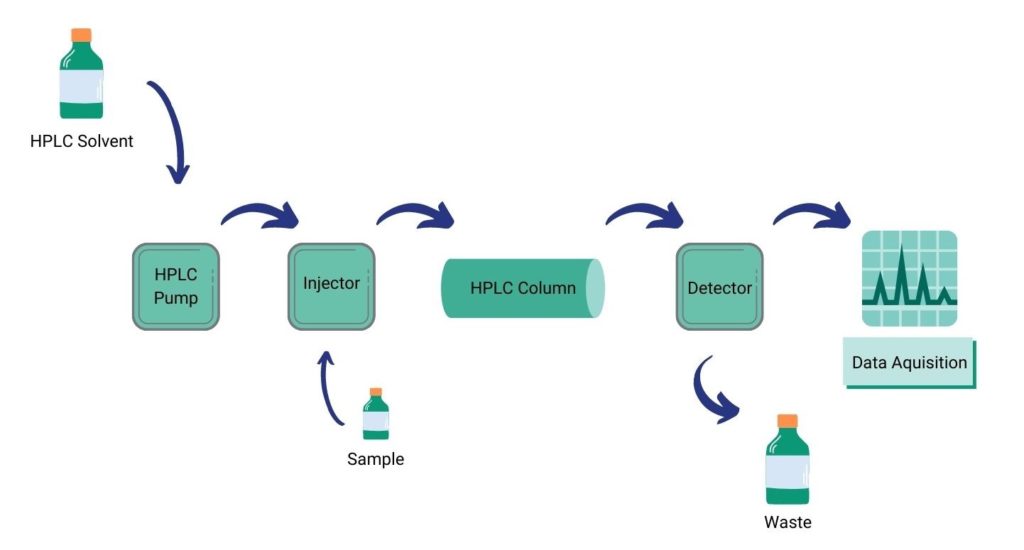In pharmaceutical industries, UHPLC is becoming more and more essential due to its accessibility and its chromatographic performance.
Skyepharma’s AD/QC laboratory has strengthened its analytical range by the acquisition of H-Class acquity UPLCs, state of art equipment in liquid chromatography field for routine analysis and analytical development.
Chromatographic analysis, the laboratory core analysis
The UHPLC works on the same principles as an HPLC:
- A pump delivers a defined flow of mobile phase to the system (injector, column, detector);
- A specific volume of the sample solution is injected into a column. The column is separating analytes via chemical interactions between the mobile phase and the stationary phase;
- The analytical response translating the concentration of separated analytes is acquired by a detector (for example UV, IR, Mass spectrophotometry, …)
- The response is then processed by a specific software as Empower 3, used in Skyepharma laboratory. This software translates the detector response to a chromatogram, see chromatograms examples in figure 2.

Figure 1 : Chromatography Principle
The main differences between UHPLC and HPLC are the following: thinner tubing, lower injection volume, very high-pressure resistant pump (until 15000 PSI).
Those features allow to use more efficient columns with smaller dimensions (granulometries less than 3 µm, lengths less than 125 mm). But it implies to filter all particles greater than 0.2 µm in sample solutions and mobile phases.

Figure 2 : Chromatography Differences Between HPLC and UHPLC
UHPLC: Maximal efficiency
- Increased availability of analytical equipment with a significative reduction of analysis run time.
- Decreased consumption of reagent and mobile phase with better separation of analytics.
- Optimization of HPLC methods
- Increased productivity and decrease of analytical costs.
Why UHPLC?
Thanks to this acquisition, Skyepharma intends to meet every better to customers’ expectations, offering a wide range of analytical equipment and ever-increasing expertise.
“Having UHPLC equipment available in our laboratory is a great benefit for our customers. Indeed, analytical method developed with UHPLC are more performant. The analysis time is lower so is the cost of the analysis with expected quality on results delivered.
Moreover, as an analytical project manager, it is a great asset to be able to offer this technology to customers in order to optimize old analytical method as part of the product life cycle management.”
Alice JOLIBOIS, project manager for AD laboratory




